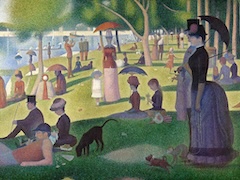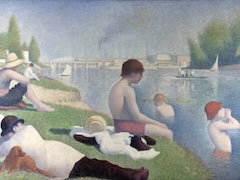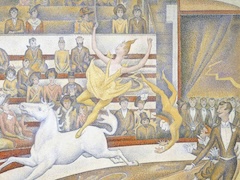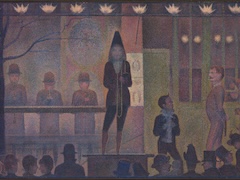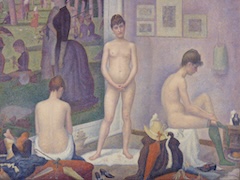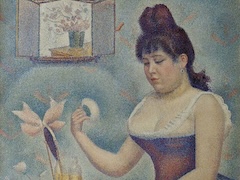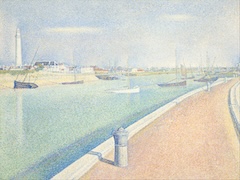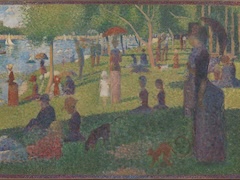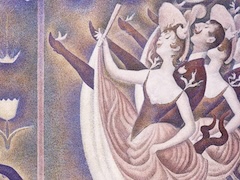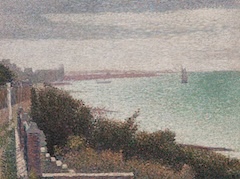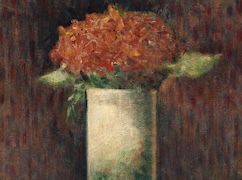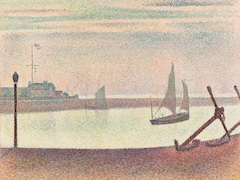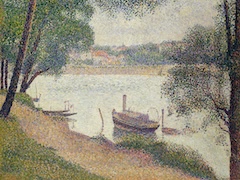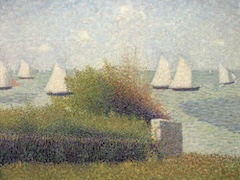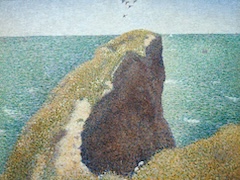Seated Woman by Georges Seurat
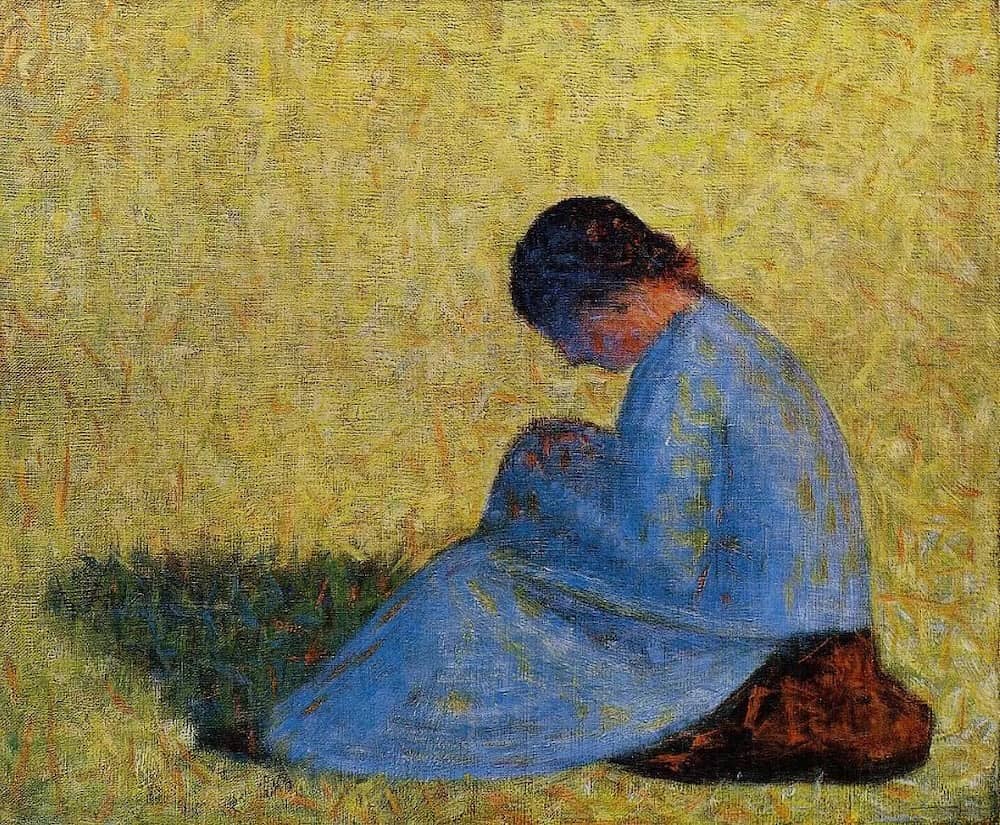
Painted when Seurat was twenty-three, this youthful work shows how deeply influenced he was by Puvis de Chavannes, unquestionably one of the most successful French artists toward the close of the nineteenth century. Like Puvis, Seurat firmly sets down a single sculptural silhouette so that it stands out against a lighter background. Although Puvis' influence on Seurat extended even as late as some of his studies for Bathers at Asnières, it is sure that Seurat - who according to Fénéon was a "more modern Puvis" — was never guilty of "idealized" imagery. Puvis, the painter of creditable but pallid decorative works, simplified his forms in a way very different from Seurat's. The latter worked rather in the Giotto-Poussin tradition. Puvis' error was to have destroyed the life of his forms by stylizing them. His excess of restraint led to pictorial poverty, whereas Seurat keeps his forms animated even as he strips them to their essentials.
Nonetheless, Seurat saw very well the value of what is Puvis de Cha-vannes' main contribution-what Henri Focillon called his "moral landscape." By no means will all his allegories be forgotten — paintings like Hope and The Poor Fisherman will survive. Yet, while appreciating Puvis, Seurat skillfully avoids falling into anything like academicism, and does not betray the slightest hint of Symbolism —he who lived in the midst of "Decadent" poets and writers.

